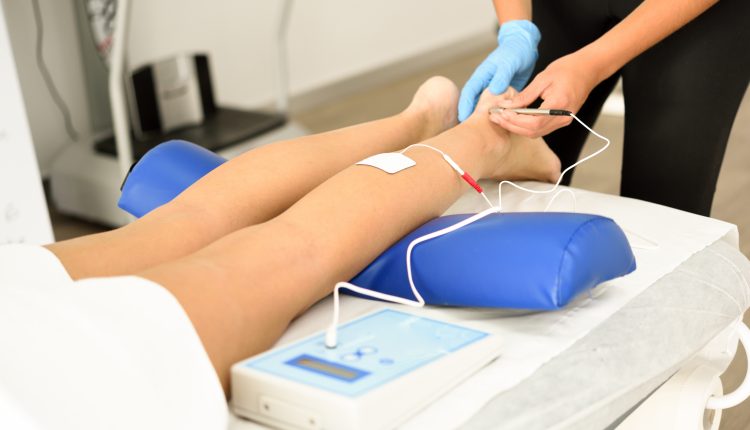Does Electric Stim Build Muscle? Unraveling the Potential of Electrical Muscle Stimulation (EMS) in Muscle Building and Fitness

Muscle building and fitness have long been the focus of athletes, fitness enthusiasts, and people looking to enhance their physical performance. Traditional methods like weightlifting, cardio exercises, and resistance training have proven effective in promoting muscle growth and strength. However, in recent years, there has been growing interest in the use of Electrical Muscle Stimulation (EMS) as a supplementary or alternative method for muscle building, rehabilitation, and overall fitness.
EMS involves the application of electrical impulses to muscles through electrodes placed on the skin. These impulses trigger muscle contractions, simulating the effects of physical exercise. EMS devices, often referred to as electrical muscle stimulators or EMS units, have gained popularity in various fields, including physical therapy, athletic training, and general fitness. This article explores the concept of EMS and its potential benefits in muscle building, treatment, and exercise.
Understanding Electrical Muscle Stimulation (EMS):
Electrical Muscle Stimulation (EMS) is a technique that utilizes electrical currents to activate and contract muscles. EMS devices consist of electrodes connected to a stimulator unit, which generates controlled electrical impulses. When these electrodes are placed strategically on specific muscle groups, the electrical impulses penetrate the underlying tissues, causing the muscles to contract.
These contractions closely mimic natural muscle contractions that occur during physical exercise. EMS is used to target both superficial and deep muscle fibers, making it a comprehensive muscle activation tool.
The Science Behind EMS Muscle Building:
EMS triggers muscular contractions by stimulating motor neurons, which are nerve cells responsible for transmitting signals from the brain to the muscles. When the electrical impulses from EMS devices reach these motor neurons, they cause the muscles to contract. These contractions activate a significant number of muscle fibers, including those that may be challenging to engage through traditional exercises.
Research and Studies on EMS Muscle Building:
Numerous studies have been conducted to assess the effectiveness of EMS in muscle building and physical performance. While some studies have shown promising results, others have provided conflicting outcomes. The effectiveness of EMS for muscle building seems to vary depending on factors such as the EMS device used, individual response, training protocols, and consistency in application.
Some studies suggest that EMS can be beneficial in enhancing muscle strength, muscle mass, and overall athletic performance when used in combination with regular training routines. However, it is essential to approach these findings with a critical eye, as more comprehensive research is needed to draw concrete conclusions.
EMS for Muscle Recovery and Injury Rehabilitation:
Beyond muscle building and fitness, EMS has shown potential in aiding muscle recovery and injury rehabilitation. By promoting blood flow and stimulating muscle contractions, EMS can help reduce muscle soreness and accelerate the recovery process after intense workouts or injuries.
Furthermore, EMS may be utilized in physical therapy settings to assist patients in regaining muscle function and strength, especially for those with limited mobility due to injuries or medical conditions. However, it’s crucial to consult a licensed physical therapist before using EMS for therapeutic purposes to ensure it’s appropriate for individual needs and conditions.
EMS Devices and FDA Approval:
The market is flooded with various EMS devices, ranging from simple EMS units to more sophisticated electrical muscle stimulators. Some products are marketed as “ab belts” or “electric muscle stimulators” that claim to promote muscle growth and weight loss with minimal effort. It’s essential to approach such claims with caution, as the effectiveness of these devices may not be supported by substantial scientific evidence.
The United States Food and Drug Administration (FDA) has cleared certain EMS devices for specific therapeutic purposes, such as muscle re-education and treating muscle weakness after surgery. However, the FDA does not endorse EMS devices for weight loss or general muscle building.
Conclusion:
In conclusion, Electrical Muscle Stimulation (EMS) holds promise as an adjunctive tool in muscle building, physical therapy, and fitness. While some studies suggest potential benefits in enhancing muscle strength and mass, more research is needed to fully understand the long-term effects and optimal application of EMS in these contexts.
As with any fitness or therapeutic approach, it’s crucial to consult professionals like physical therapists or fitness experts before incorporating EMS into your routine. Additionally, consumers should be cautious when choosing EMS devices and avoid products that make extravagant claims without substantial scientific backing.
EMS can be a valuable addition to a well-rounded fitness regimen, but it is not a magic solution for muscle building or weight loss. A balanced approach that includes regular exercise, proper nutrition, and adequate rest remains the foundation for achieving fitness goals and promoting overall health.


Comments are closed.